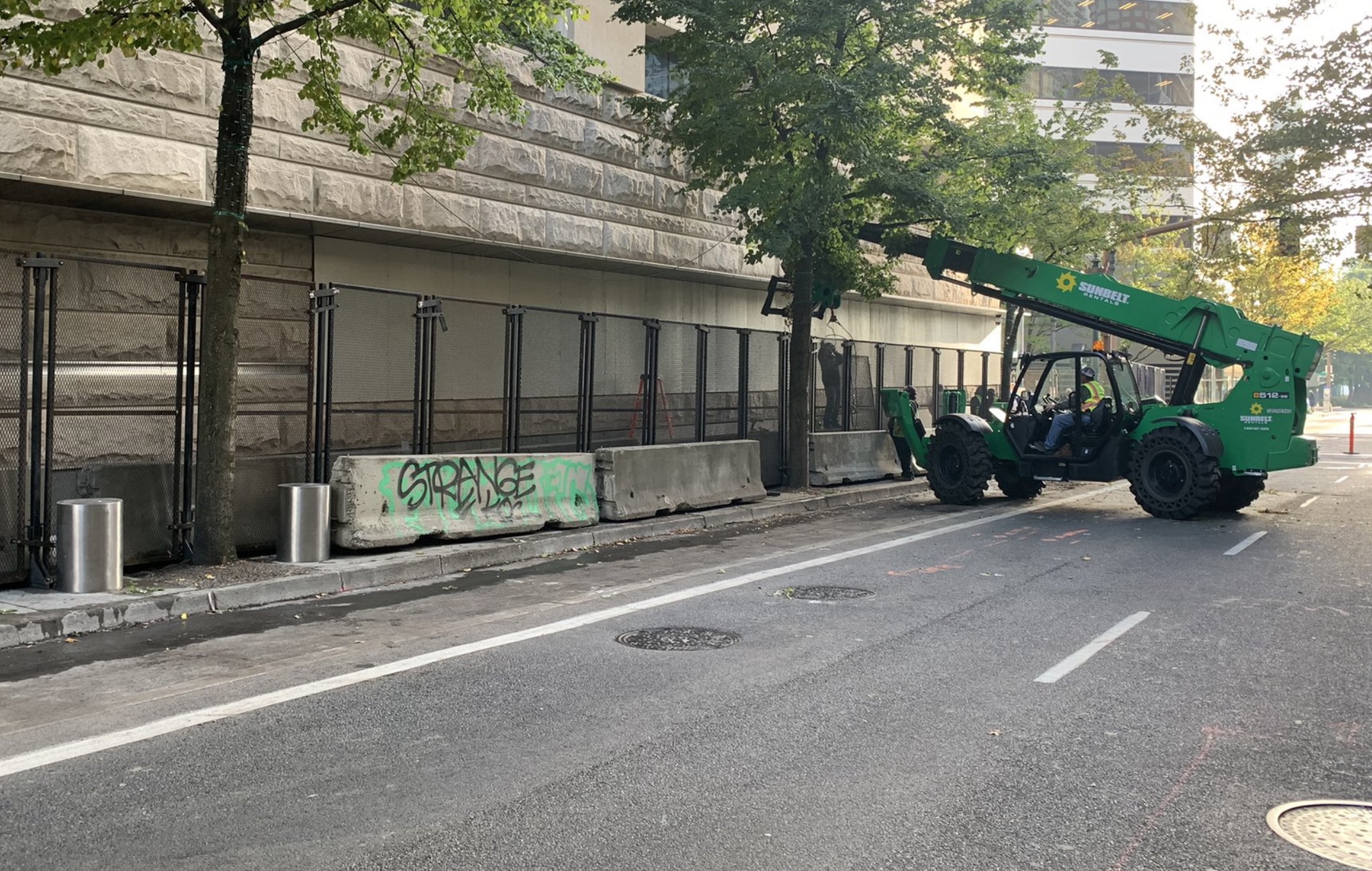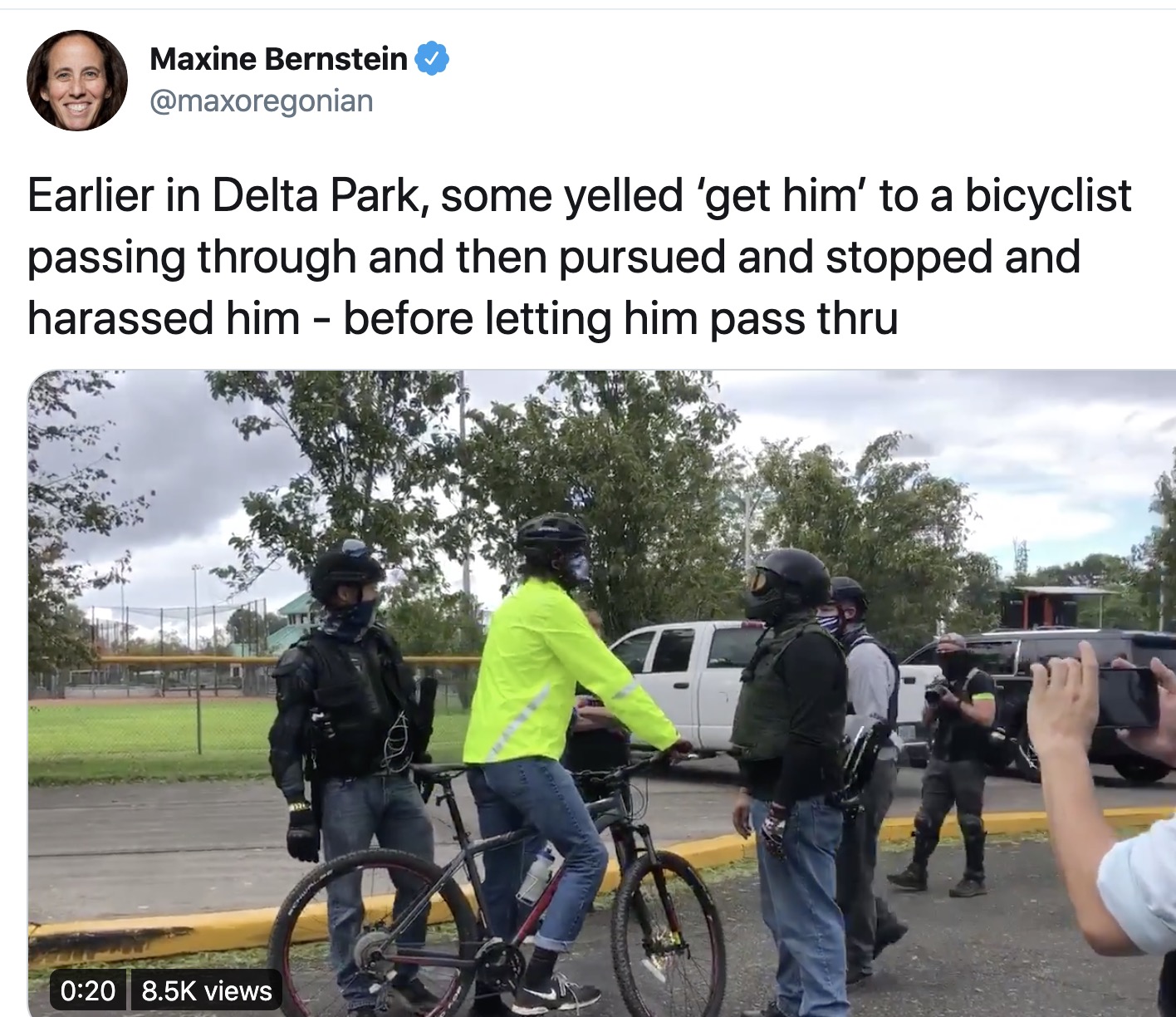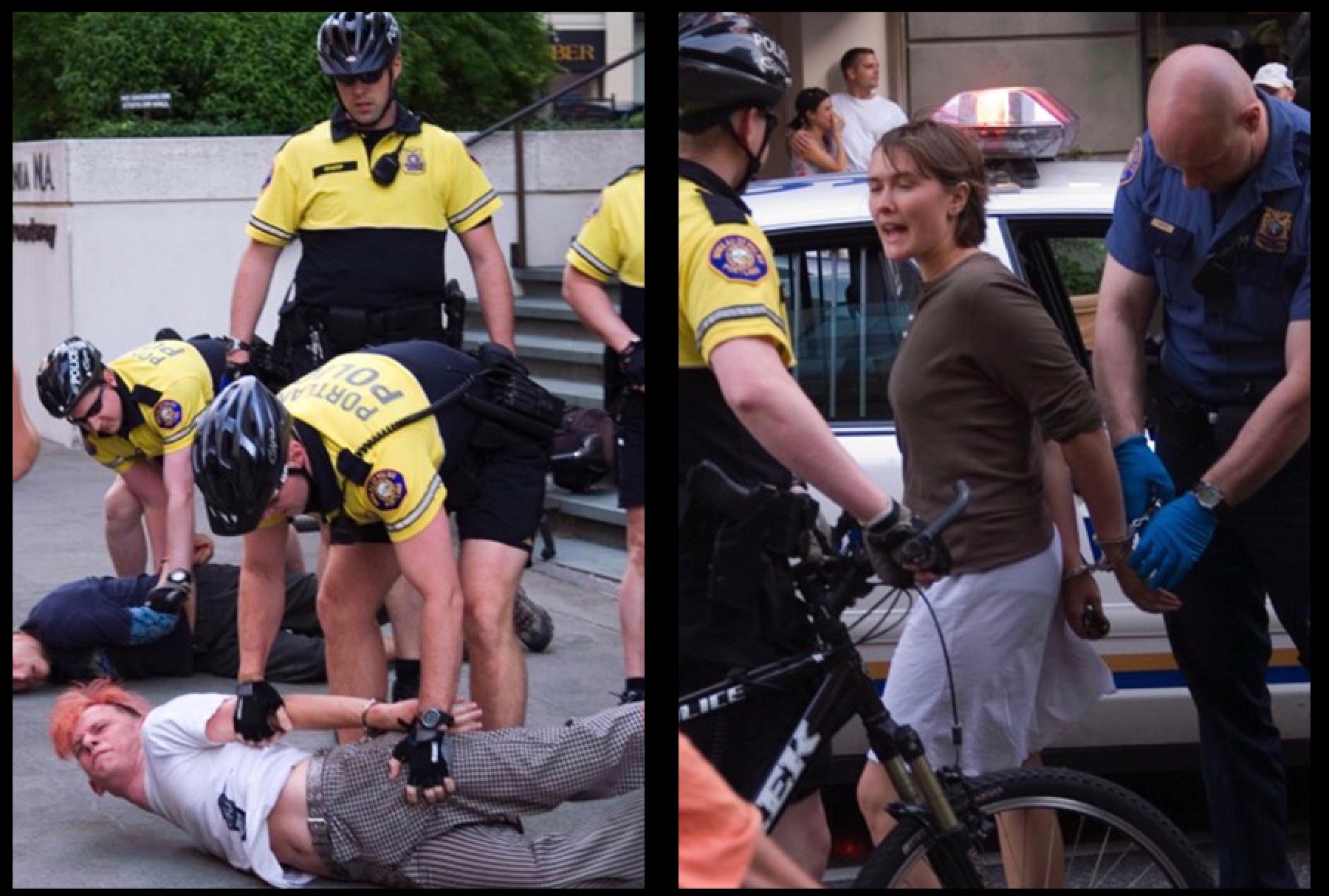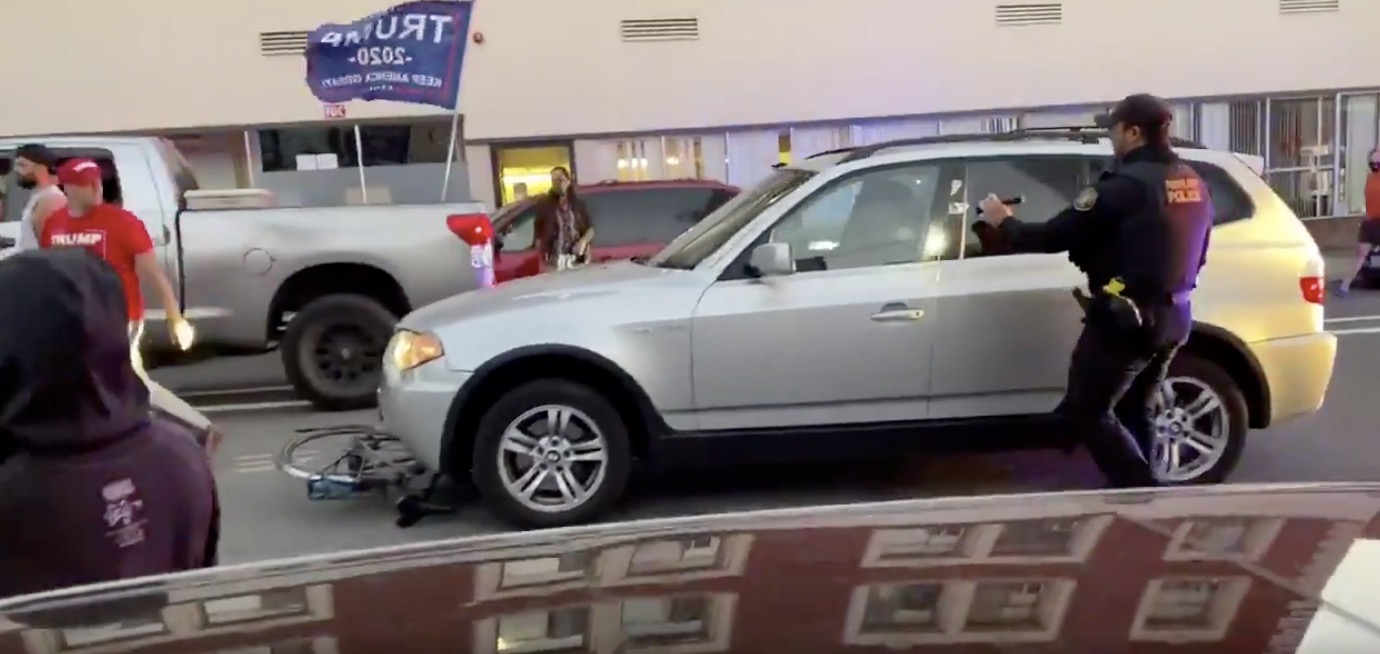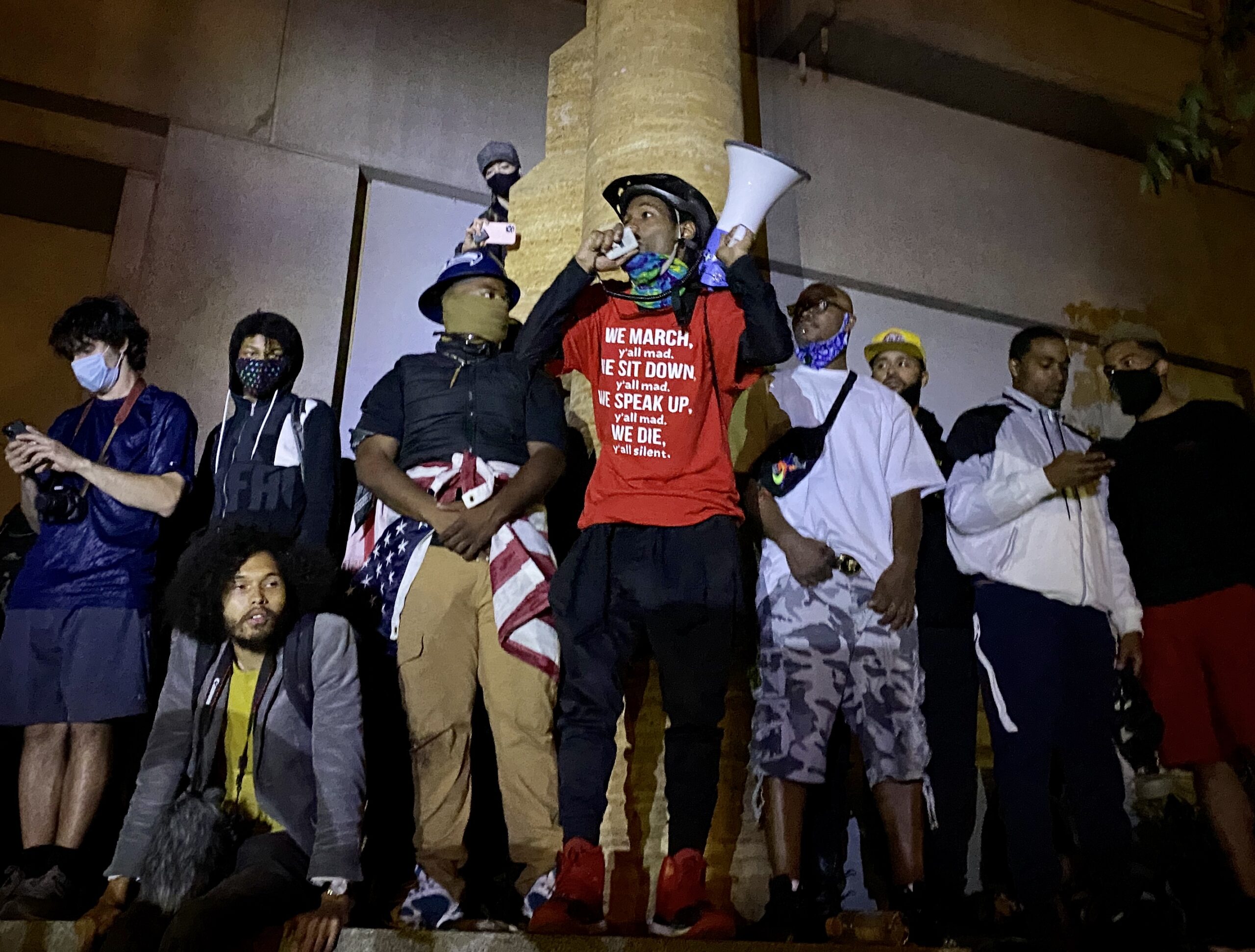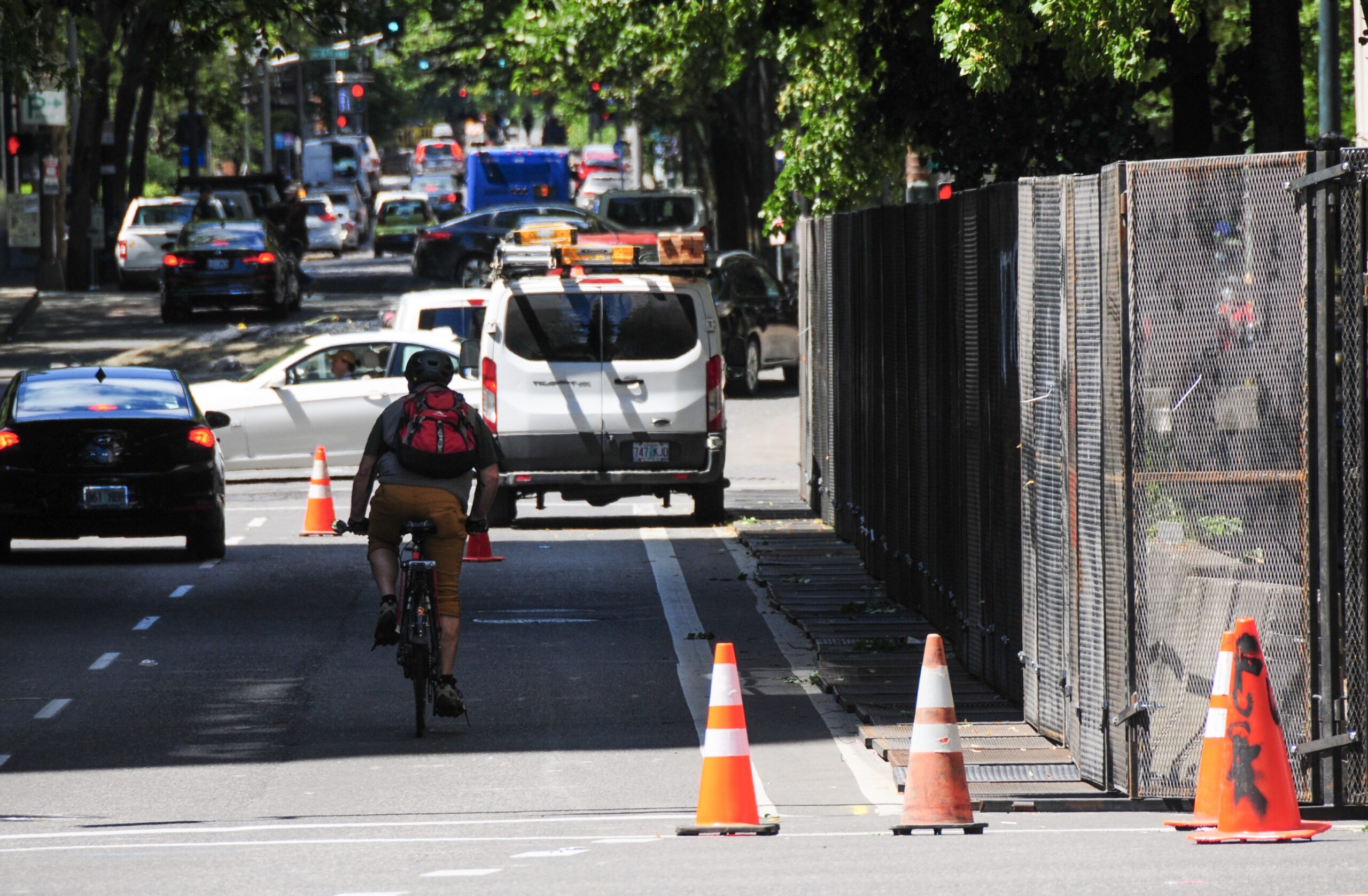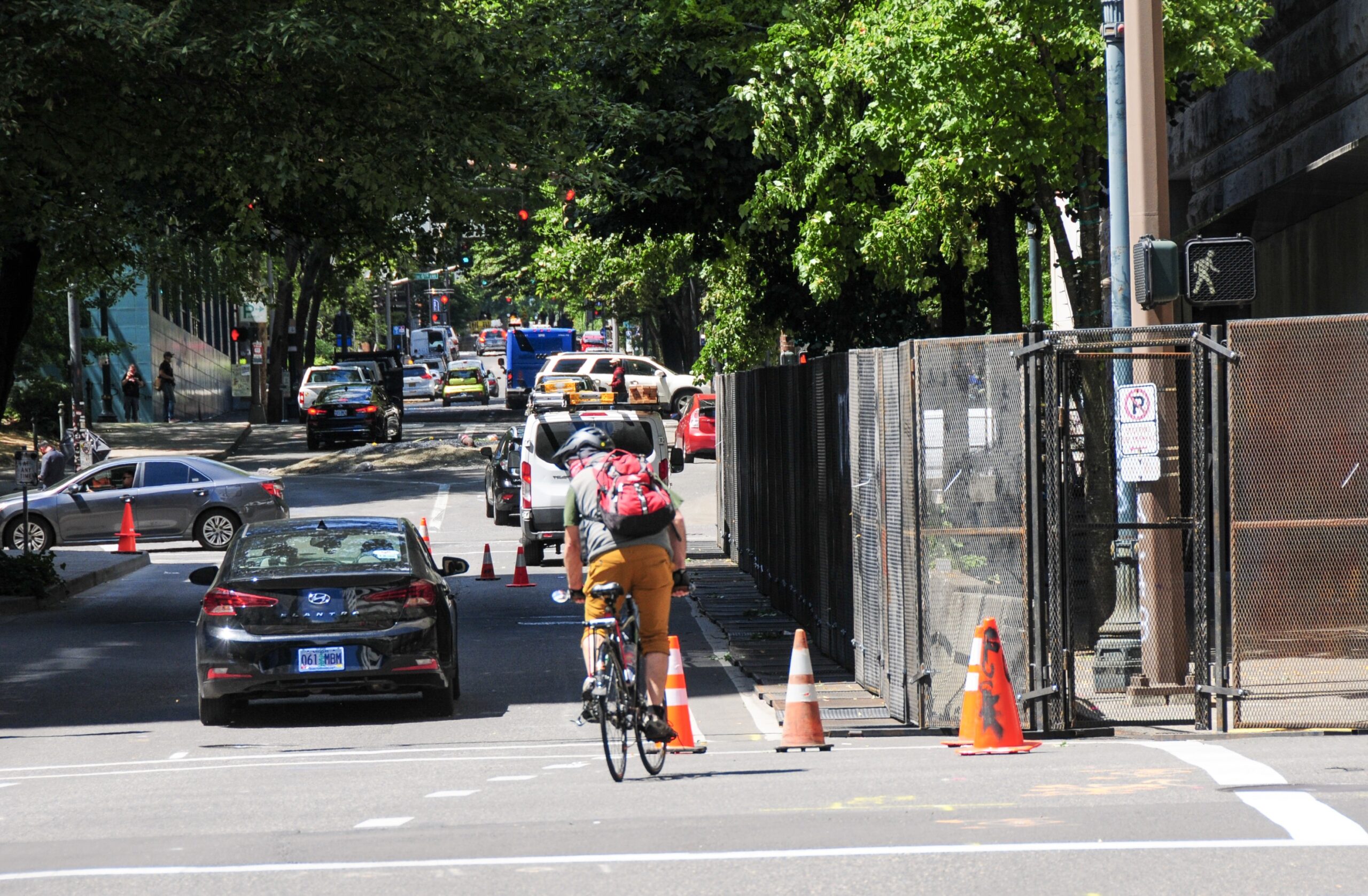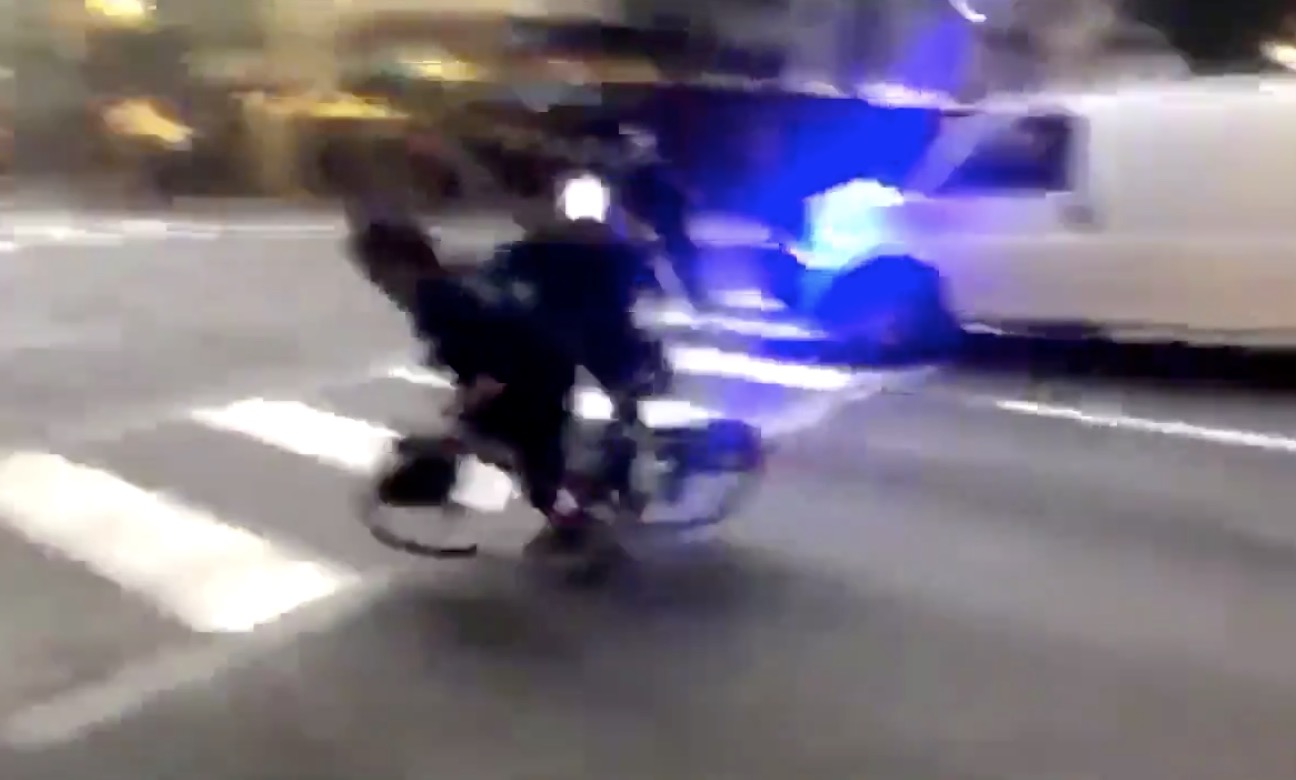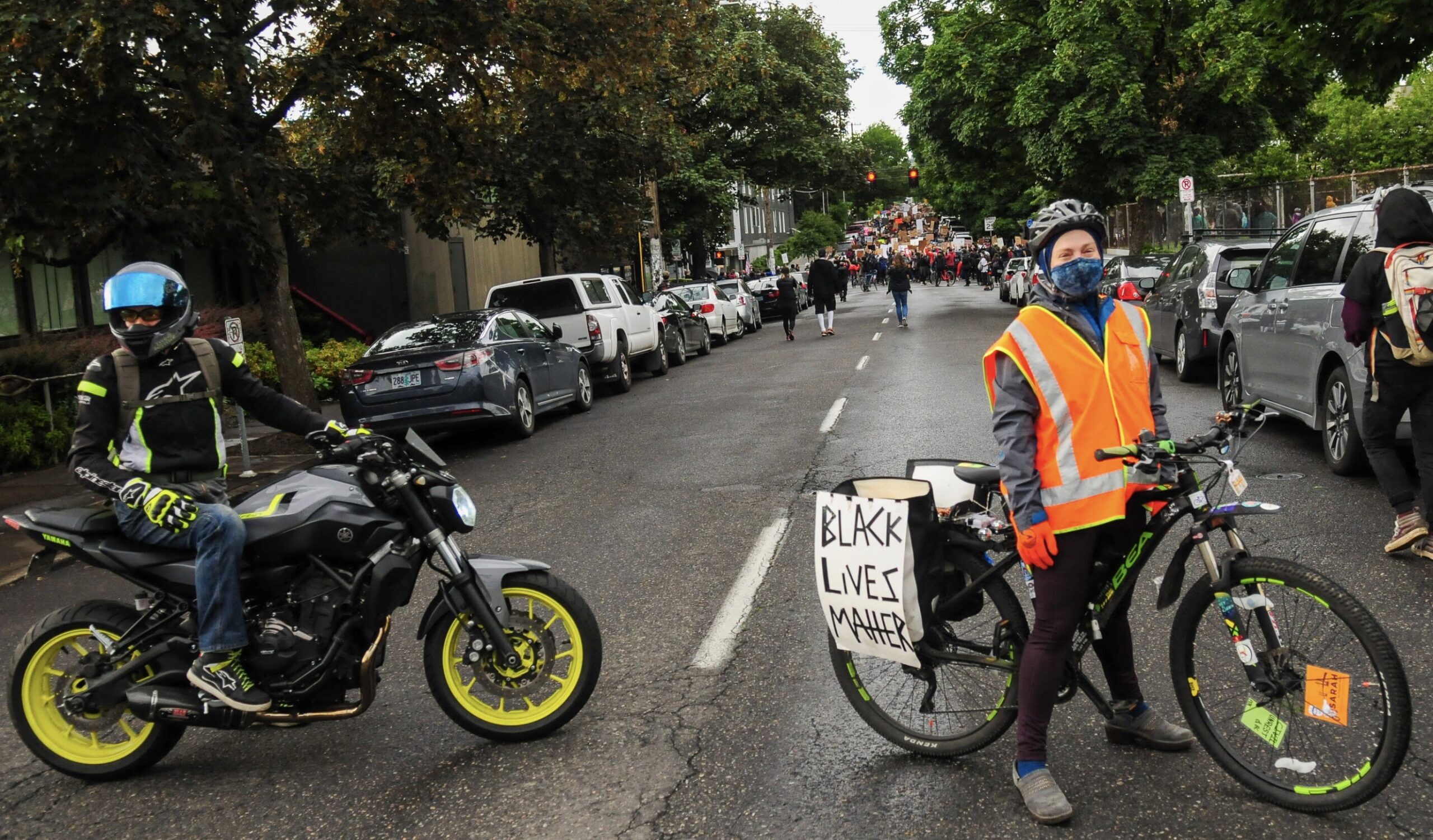george floyd protests
Bicycle riders ensnared by police and Proud Boys during weekend protests
Earlier in Delta Park, some yelled ‘get him’ to a bicyclist passing through and then pursued and stopped and harassed him – before letting him pass thru pic.twitter.com/I5KUReLQ0R — Maxine Bernstein (@maxoregonian) September 26, 2020
Victim of collision during pro-Trump ‘cruise rally’ seeks witnesses
Car runs over bicycle, police arrive to investigate pic.twitter.com/0TQ7AO6JYH — Sergio Olmos (@MrOlmos) August 30, 2020
PBOT defends bike lane, says federal wall on SW Main is illegal and must be removed
The Portland Bureau of Transportation says a metal fence and concrete barriers installed around the Federal Courthouse yesterday are illegal and they’ve sent a cease and desist letter to the United States General Services Administration demanding that it be removed. As we reported Wednesday, the unpermitted fence blocks an entire lane on Southwest Main Street … Read more
Feds erect wall on city-owned street, blocking travel lane on SW Main
(The fence completely blocks a travel lane on SW Main and partially blocks a lane on SW 3rd. Photos by Jonathan Maus/BikePortland)
Person thrown to the ground and arrested while biking on SW 4th Avenue
WATCH – Portland Police officers knock a protester off of his bicycle and arrest him outside of Lownsdale Square Park near the Federal Courthouse downtown #LiveOnK2 pic.twitter.com/tow0GzeyzW — Dan McCarthy (@DanMcKATU) July 16, 2020
Local riders create ‘Bike Corking for Social Justice’ how-to guide
For over a month now, Portlanders have been taking to the streets every night to protest the killing of Black people and the racist policies and police brutality that contribute to it. At almost every march there’s been a cadre of two-wheeled escorts patrolling intersections, directing traffic, and doing whatever is necessary to keep protestors … Read more



